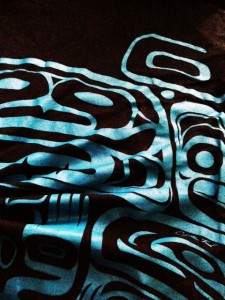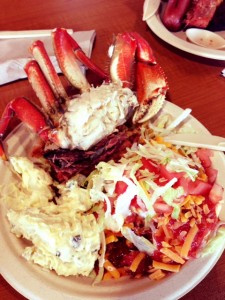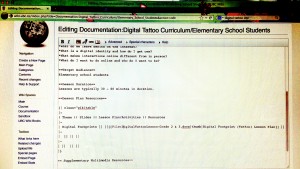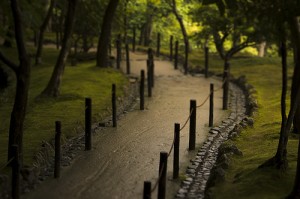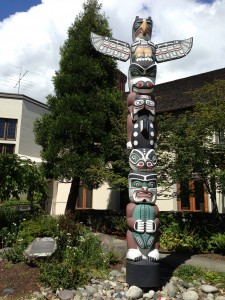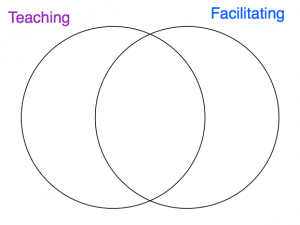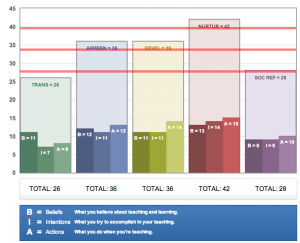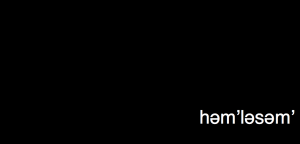Author Archives: Olivia Yeung
Aboriginal Day – Musqueam Visit
On June 21, 2013, Dani and I visited the Musqueam Community Centre for Aboriginal Day. This was the first time that I have ever took part in an Aboriginal celebration, so I was super nervous the whole time I was there. Despite my nervousness, I tried to experience everything that I could – I watched a “Witness” ceremony, a couple of groups performed, the elders were acknowledged and respected, the food was so delicious, I visited the Baskets for Barter exhibit, I looked at all the arts and crafts at the stands, and much more. The people there were so amazing and friendly, I felt very welcomed there. It was definitely a different experience for me – experiencing a different culture – but it was fascination to see and learn about. Dani and I walked also around the reserve and I absolutely loved how quiet and close-knit the community was. It’s interesting that all this time, there was a reserve so close to UBC, yet I’ve never seen or heard about it before…
I am so appreciative that Dani and I were invited to attend this celebration, because I must admit, I had some pretty stereotypical ideas on what the reserve might look like before visiting there. This experience has definitely made me reflect on my lack of knowledge for the Aboriginal peoples, and how many people today still have these stereotypical ideas.
Lesson Plan: Digital Tattoo
Dani and I made a lesson plan on Digital Footprint for grades 2 and 3. We had a blast creating this together, and it reminded me of how much I love team-teaching. During my practicum at Charles Dickens, I did team-teaching for the first half with my partner, and taught alone for the second half. Not needing to do it for quite some time, team-teaching felt a little “distant” to me. However, working with Dani rekindled my fire for it. I love bouncing ideas off of each other, the back-and-forth dialogue, and thinking about all the logistics. We created the lesson plan pretty quickly, and it felt like everything just fell into place.
Since we finished quite early, Cindy taught us how to put our lesson plan on the UBC Wiki. It took us a little while to figure out what we had to do, but we did it in the end! It felt like we were real website “coders!” (see picture above)
Digital Tattoo/Footprint lesson plan: http://wiki.ubc.ca/Documentation:Digital_Tattoo_Curriculum/Elementary_School_Students
EDUC 440: The Berger Inquiry
Visiting and sitting in an EDUC 440 class was very rewarding for me. The class had a guest come in, Drew Ann Wake, who talked about the Berger Inquiry. I understood the general idea about what the Berger Inquiry was, but I did not know what to expect when I stepped into that class.
Drew Ann first talked about how she was related to the Berger Inquiry. She told us stories about her experiences and being the youngest reporter there. We were then each given a profile on a person that was at the Inquiry, and asked to read about them and “know” them. Afterwards, we took the stance of our person, “debated” with another student, and then shared with the class what we debated about.
I learned a lot from this experience – not only about the Berger Inquiry, but about how to teach Aboriginal education and issues. In this class, everyone was participating and very engaged in the activity, and there were not any harsh/disrespectful comments that usually transpire when discussing these issues.
My ideas on the reason for success of the class:
- For those who feel uncomfortable about the topic, or do not like to talk about their own views on Aboriginal issues, students were given a profile to “become” that person. This allowed all students to participate in class discussions, without needing to input their own ideas.
- Most of the time, students are uncomfortable with Aboriginal Education because they are fearful of the judgement that may be placed on them, depending on their views. Since students “became” another person in this activity, that judgement was placed on the character, rather than on the student. This allowed for the fear to dissipate and for discussion to take place.
- Although students’ own views are not said, a lot of learning took place. The profiles that were given out had a wide variety of different views. This allowed the class to hear all the different ideas that were present at that time.
I was one of the students who felt uncomfortable speaking about my own views, so this activity allowed me to be engaged and participate in the class discussion. This class also gave me an idea on how I can educate my own students on Aboriginal issues – how to take away that fear of judgement and foster comfort for class participation. This may not work every time for every issue, but I believe it is a good idea to have in my teaching toolkit.
Truth and Reconciliation
“Truth and Reconciliation” is what leads to healing, understanding, love, and friendship after a long and hurtful argument or fight, in any shape or form. One example of this in our history was when residential schools were put in place in 1875. This was definitely a very long and hurtful fight that Canada’s government imposed onto Aboriginal peoples.
I believe that truth comes before reconciliation – the truth needs to be heard before things get better. Similarly, in relationships, there needs to be communication and dialogue with each other about the issues, and there may be a lot of arguing and hurtful things said and done, but only then can true understanding happen and the road towards a better friendship walked upon.
At this point and time in my life, I am still on the path of truth. Just when I thought I knew everything there was to know about residential schools, I find out more. Currently, I am in the Elementary Education Program at UBC, and it was mandatory that I take the Aboriginal education class. Here, I learned for the first time what residential schools were. My teacher brought in a speaker to talk about her ancestors’ experiences, and I must admit, a lot of the teacher candidates in that class were resistant and repelled by how the speaker spoke to us – angry. I was one of these teacher candidates, resistant and unwilling to learn because I was put in a situation and a mood that I was not comfortable with. Needless to say, I completed that class knowing more knowledge about Aboriginal peoples, but my views were not always positive and I was still fearful of teaching Aboriginal education and speaking about these issues.
Now I am a practicum student at the CTLT at UBC, learning from Amy Perreault for three weeks. We had a discussion about my experiences in the program, especially the one mentioned above. What really impacted me was when Amy talked about how “anger” is an emotion that is allowed to be felt, and that it is part of the healing process. This made me reflect upon how I expected the speaker that came into my class to tell me more about the truth, but I wanted her to speak to me in a a specific way – a way that I’m used to. My definition of truth at that time was a synonym for knowledge. I disregarded the “emotion” that comes with truth, not accepting her anger or thinking that it was appropriate. I realize now that I had a great opportunity, right in front of me, to learn the truth about residential schools. I could have learned and felt so much more from the speaker if I truly understood what truth was. Now, only a couple of days after that discussion with Amy, I am learning so much more than I expected here at CTLT, partly because my eyes are now open. I am more comfortable with dialogue about these issues and about Aboriginal peoples, I am more willing to ask questions, and I now feel I am starting to understand the truth.
My journey so far at the CTLT allowed me to think about my own teaching on Aboriginal education. I went through 22 years of my life not fully understanding what was happening, and not taught the real truth. When I start teaching, my hope is that I teach about emotion and how they are natural things to feel. To fully understand the truth, a balance of emotion and knowledge is needed – if I do bring in an “angry” speaker, there must be a discussion on “why”. Only then can the road to reconciliation be closer in view in the long distance ahead.
Education for Aboriginal Students at UBC: Historical Timeline
This historical timeline is a really great way for students to learn about Canada’s history, alongside UBC’s history. Quite often, students feel a sense of distance when learning about history, thinking that it isn’t relevant to their lives today. However, looking at the timeline (which shows Aboriginal Students at UBC, Events at UBC, and BC/Canadian Context categories side-by-side), I found that I was able to relate a lot more to my country’s history because I recognized names like First Nations Longhouse and Totem Park under the “Aboriginal Students at UBC” column.
While comparing what was happening at UBC and Canada, I found that there were some discrepancies – it was surprising to see that at times, the history did not match. For example, in 1927, Musqueam house posts were presented to UBC as a gift, but in the same year, the government added Section 141 into the Indian Act, which did not allow Indians to hire lawyers or legal counsels. It seemed that the Musqueam were trying to be welcoming to UBC, but on a bigger scale, the government passed a bill where they were not allowed to fight for their rights. This was odd to me, but interesting at the same time to see how history and intentions can be so different in two places at the same point in time.
Going back to the idea that this timeline is much more “relatable” to students, I found it really fun to place myself in the timeline. I really enjoyed reading about what was happening when I was born, when I was in grade 1, and especially when my grandmother and mother were born. Since my family is from China, they did not know what was happening on this side of the earth. Yet, what was happening made a huge impact on their lives today. Placing myself in the timeline also made me realize how oblivious I was to everything that was happening around me. For example, in 1996, I was in grade 1 at 6-years-old. This was also the year that the last residential school closed. Knowing this fact now, I do not know why I was never taught about residential schools, especially when I, myself, was in school. It’s a very weird feeling realizing that when I was attending school without any problems, there were Aboriginal children attending schools too, but in a completely opposite setting.
I definitely learned a lot through this timeline and activity. History was quite “fun” when I put myself onto the timeline to see what was happening during those years. If I were to do this activity in the classroom, I would get my students to make a timeline of their own lives first (just to get used to the idea of what a timeline is), and then try to mesh their timeline with the Historical Timeline. I would set expectations that they choose a certain number of historical events to mesh onto their timeline, and to explain and reason why they chose those specific events. I want my students to be able to relate to history, and not just memorize it. Giving them a set number to put on their timeline will allow them to really focus on those events, really relate to it, and to reason why they chose it.
Facilitation Opportunities and Challenges (workshop)
Going into this workshop, I thought that it would be a great “shadowing” opportunity of one of my supervisors, Cindy. I did not know what “facilitation” was or meant, and so my intent was just to sit and listen.
However, it turns out that facilitation is like teaching, but with a very small difference. I was listening to all of the “challenges” that the participants of the workshop were experiencing, and my mind literally had a flashback to all of my education classes where I learned about classroom management and other challenges to teaching. With each challenge said, I felt more and more welcome and like I belonged there because I’ve experienced all of those challenges as well. I was probably one of the youngest people at the workshop, and also with the least experience, but when we did 4-per-group activities, my group members looked to me for solutions to the challenges, and even for mutual confirmation. This made me feel like I had a voice, with things to offer, even if I am still a new teacher.
I know that during my practicum, when some of these challenges came up, I felt that I was not meant to be a teacher. Being at this workshop gave me a new insight – these “challenges” will always be there when teaching or facilitating, even when teaching adult students. The key is to figure out what works for your students/audience to solve these challenges, which is an easy thing to say but a hard thing to do. However, it is a great feeling to know that I am not alone.
Teaching Perspectives Inventory (TPI)
I took the Teaching Perspectives Inventory (TPI) to reflect upon and find out my teaching style. I found the TPI quiz exciting, but very challenging. Exciting, because (well, let’s be honest) everything related to “teaching” is exciting! At the end of this quiz, I was able to find out more about who I am as a teacher and my teaching philosophy. It did come with challenges, though…
Looking at my results, at first, I was appalled at how “low” I was on Transmission and Social Reform. I thought to myself, “How can that be?” But reading through the descriptions of the Five Perspectives, I realized that it’s not that I don’t find Transmission and Social Reform important, it’s that I find the other perspectives more readily related and more important to my class at the time. Reading on Apprenticeship, Developmental, and Nurturing, I realized that those three categories are what truly differentiates my experience at Charles Dickens Elementary from any other school. It thrives on seeing each student as an individual, learning at different paces, being at different places, and coming to school with different experiences and knowledge. All teachers need to have “Transmission” in one way or another, because that is traditionally what a teacher was to do (in my opinion). Teachers teach things in a timely manner, assess and evaluate, etc. And in terms of the “Social Reform” perspective, I want to improve this in my teaching. It’s possible that I didn’t think much about this during my practicum because I was in a K-2 classroom and “Social Reform” seems to be more of an intermediate trait, but then I’m forgetting about the power of a child’s voice and the changes that can be made with that voice.
I’m really glad that I took the TPI quiz because it gave me a chance to really reflect on what I did during my practicum and the philosophy that I took away with me.
Tour of UBC
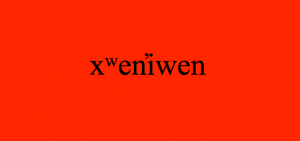
This word was put on a bench at UBC, meaning “Believe.” However, due to the lack of knowledge, the word was spelled wrong. All the e’s should have been schwa’s (ə). The bench has now been replaced with the correct spelling.
Sarah took Dani and me on a tour around UBC looking at knowledge of Musqueam presence on campus. This was an eye-opener for me in many ways. I did my undergraduate degree here at UBC (a total of 4 years), and not once did I ever notice any of the things Sarah showed us. This made me ask the question “why.”
When I was an undergraduate, I identified as a “student.” I needed to rush to get to classes, grab super quick lunches, and study study study! My mind was set on being focused – focused on tests, being on time, etc. My life was a back-and-forth relationship of going to school, then going home to sleep. There was no time to do anything else.
After taking the tour, I was amazed at how many “mistakes” there were on buildings, signs, etc. I do think it is great that UBC is starting to acknowledge that the land belongs to the Musqueam, but this acknowledgement becomes an insult when there are so many mistakes, especially when words are spelled wrong. I believe that this shows how so many people today have very little knowledge on Aboriginal culture and language. As a future educator, I hope I can help with changing this soon.
What I Would Like to Learn at CTLT
Having spent a few days at CTLT, I’ve started to see a faint path that I could follow during my time here. My one big, and most important, goal is to learn and improve as a teacher. I’m not a perfect teacher (and never will be), so there is so much to learn and see from all the new people I’ve met. Alluding to my high school days, I would love to do a “Take Your Kids to Work Day”, shadowing my supervisors to see what they do in the day.
I’m starting to understand what CTLT is all about, and I would really love to see the collaboration that takes place between CTLT and UBC faculties. Being a fresh graduate from the Faculty of Arts in 2012, I did not know about all the “behind the scenes” things that take place within each faculty, or even within each course. CTLT is a huge contributor to the learning and the teaching that takes place at UBC. As a future educator myself, I would love to see the possible changes that may happen in learning and teaching at the University level. I did my elementary education practicum at Charles Dickens Elementary, which is quite a different, non-traditional, school. I loved the philosophy there and have brought most of the things I learned from them into my own teaching philosophy. The problem with having a more “non-traditional” philosophy is that there is definite uncertainty whether what you do in your classroom will help your kids in the future – in high school and university. If there are any changes happening at UBC, it will definitely help me build a more positive light towards my own teaching philosophy.
Lastly, a goal of mine would be to contribute in some way to my supervisors, or to CTLT as a whole, in even the most minute way. As a future teacher and educator, I hope to be able to bring something to the table!

